The Accidental Allegory of ANIARA
How the bleak Swedish sci-fi drama, directed by Pella Kågerman and Hugo Lilja, inadvertently mirrored the mood and circumstances of our pandemic reality.

“There is protection from nearly everything, but there is no protection from mankind… How terror blasts in, how horror blasts out…”
•••
The first time I heard of Aniara was through a highly curiosity-piquing Instagram post/review of the film by author Mark Z. Danielewski, wherein he wrote:
“Hands down the scariest sci-fi film I’ve ever seen. Aniara surpasses even 2001 in its understanding of what distances the stars describe. There are no fairy tales in space. Devouring aliens would be a comfort. Forget transcendence, apotheosis, revelation. Behold where we live. We are no match.”
So hey, when the man who penned the epic existential horror mind-fuck of a novel that was House of Leaves proclaims that something is the scariest anything to him, you better believe I’m going to sit up and pay attention.
My ultimate opinion upon having seen Aniara for myself was one of general agreement with the overall sentiment of Danielewski’s review, while also acknowledging that the film did not personally fill me with the anticipated kind of guttural bone-deep existential mortal dread his words lead me to imagine. Nonetheless, Aniara still holds forth as an unforgettable, eccentric, bizarre, harrowing, head-spinning, heartbreaking, nihilistically haunting experience that lingers on the fringes of one’s mind for days, even months afterwards.
Bare-bones elements of the plot — i.e. people onboard a spaceship are forced to reckon with trying to survive long enough to get where they wanted to go — have been seen before in various modes of science fiction storytelling, with who knows how much influence/inspiration could’ve been taken from the original Harry Martinson poem on which this film is based.
Pixar’s Wall•E had shades of this premise, as did the Chris Pratt/Jennifer Lawrence vehicle Passengers, and most recently, Armando Iannucci’s HBO series Avenue 5, which skirted many similar ideas, but in a more comedic mode.
However, there is one mightily big key factor that significantly separates Aniara from them:
To one extent or another, those examples all contain some measure of hope and optimism to sweeten the bitter pill of spiralling mortal dread that would otherwise surely consume the story, and the characters whole.
Aniara emphatically does not.
It’s the intense deep space exploration of Interstellar, viewed through the prism of the despairing decay of human mortality of Synecdoche, New York, and the misanthropic cynicism and biting social satire of Snowpiercer.
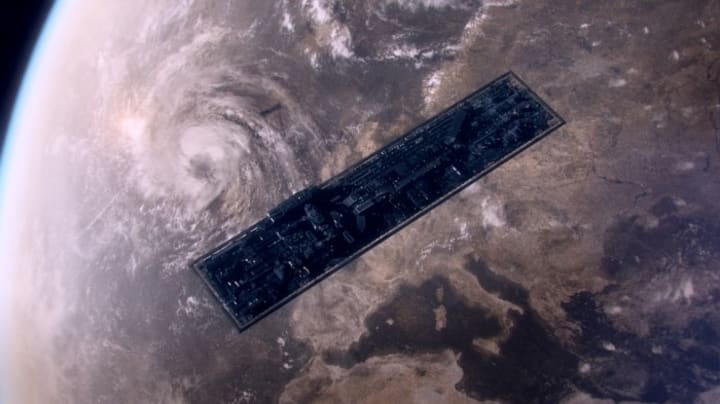
That’s not to say the film is an endless parade of drudgery and misery porn that’s content to be monotonously miserable from start to finish. Far from it, as what makes the film anywhere remotely impactful is in how complex Aniara’s emotional palette frequently is, often dipping into wryly understated, darkly absurdist humour, sometimes simultaneously spiking some of the film’s bleakest moments to make them doubly sadder than they would have been in isolation.
(Case in point: the thuddingly blunt, Shining-esque title cards demarcating the increasingly elongated passages of time, whose editorial smash-cut timings fluctuate between startlingly hilarious, and devastatingly gut-wrenching.)
Speaking of isolation, that provides me with a neat segue into discussing the realisation that slowly dawned upon me as my viewing of the film progressed, which was this:
Aniara already had a lot of timely allegorical substance baked into it when it was first made, primarily regarding themes of societal and environmental collapse as a result of humanity’s destructive hubris.
But what enveloped me with a cold, creeping horror was the insidious epiphany that, watching the film right now during this very specific moment in history, Aniara has accidentally become a perfect cinematic encapsulation, and metaphorical reflection of the self-isolating reality of living in the age of coronavirus.
First, there’s the authority figure of the captain announcing to his passengers the news of the catastrophic event that is about to leave them all locked down within the ship’s confines for the foreseeable future, but couching this bombshell within the assurance that it definitely won’t last for too long, and that the ship — and everyone’s lives — will get back on track, and normality will soon be restored… even though it’s abundantly clear that nothing could be further from the truth, and everybody is utterly unprepared to comprehend the sheer scale and scope of the doom they’ve been set on an inexorable course towards, thanks to the shortsighted, destructive actions of the powers that be, who downplay and deny the severity of the situation to shirk accountability, until it’s far too late.
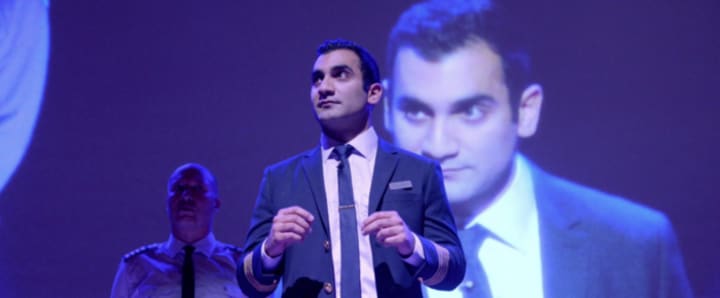
Then, there’s the bulk of the film’s depiction of this microcosm of society housed within the ship devolving into stir craziness, as inertia and entropy creeps in upon the citizens who have been forced to remain cooped within a gargantuan spacecraft designed as a spacefaring consumerist combination of shopping mall, cruise liner, and hotel resort, but whose spacious-yet-claustrophobic innards begin to curdle into feeling closer to a luxury tomb. None of the people within can escape the artificial air, artificial light, artificial gravity, artificial food, or artificial semblance of normal civilisation they’re trapped within, because going outside would spell certain death (because space), so people look out of the windows into the infinite starry void gazing back at them like an abyss, trying to kill the endless amounts of time they’re drowning in with mindless entertainment, mindless sex, and mindless nostalgia for the once-beautiful Earth they left behind, to distract themselves from the low-level grief gnawing at their souls for the lives they have lost, whether they know that grief is there or not.
(Of course, even as I say this, and even as applicable as these superficial similarities may be to a post-COVID life in quarantine, at least the hopelessly doomed characters of Aniara didn’t have to be mortally afraid of being near, or in any way coming into contact with, other people around them, as the practice of social distancing made such things become.)
The most prevalent theme of Aniara — that I took away from it, at least — is with regards to humankind’s penchant for nostalgia, and how if left unchecked to run rampant in dictating all of our decisions, it could cause more harm than good, and make us numb to properly processing trauma, tragedy, and responsibility.
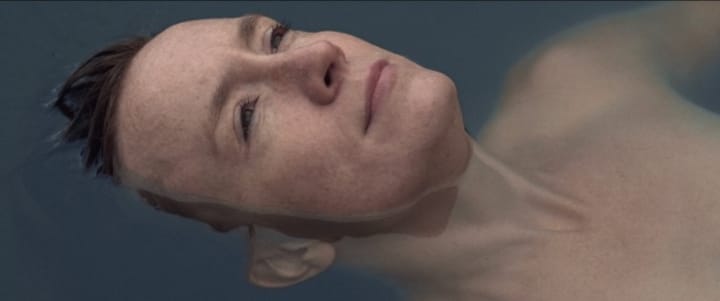
Emilie Jonsson’s protagonist, only ever identified as “the Mimarobe” or “M.R”, is designated that title through her handling of the ship’s onboard artificial intelligence known as the Mima — a machine created for humans to experience vividly simulated, idyllic, idealised recreations of the unspoiled natural beauty of Earth’s past, as it once was before it was rendered uninhabitable by an unspecified manmade environmental series of disasters, destroying the planet with apocalyptic torrents of floods and fire. (This bit of world-building is hinted at by the disturbing sightings of multiple passengers whose faces have been burnt off down to the bone, with the lack of any comments or adverse reactions conveying how unnervingly commonplace such sights have become).
The Mima’s simulations cause those who use it to become virtually paralysed, and pinned to the floor as the A.I. conjures these visions for the guests to briefly inhabit, requiring the Mimarobe’s duty of ensuring everyone has face-supporting cushions — (which really just look like hospital neck braces with added holes, which considering the film’s relatively tiny production budget, they actually might have been) — so that the customers can all lie on the floor, forget their present circumstances, and get lost in a simulacrum of a better past.
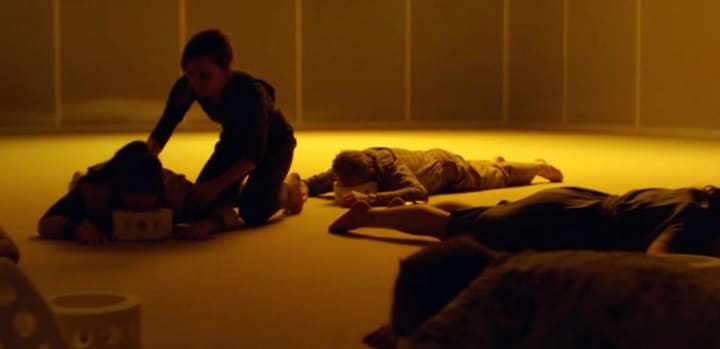
So in essence:
The Mima is literally a nostalgia machine, and those who use it visually look as though they’re either asleep or dead, visually looking as though they’re burying their heads in the ground, turning away from their grim reality in favour of indulging in a vision of a past that is both long gone, and can never be again.
(Basically, they’re all like Cypher choosing the steak of blissful ignorance in The Matrix.)
Nostalgia becomes the passengers’ addiction as time wears on, and it does… not end well, shall we say.
This becomes a prevailing motif in Aniara: the blind pursuit of nostalgia for the past, coming at the grave expense of the present, and thus leading to a worse future.
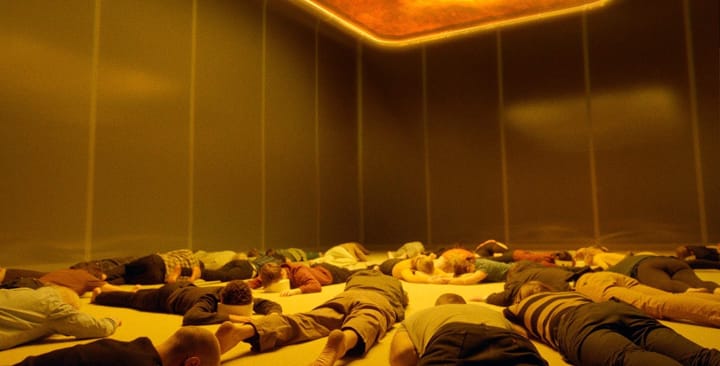
I imagine some who watch the film will find the manner in which the story ultimately underlines this argument to be mean-spirited, if not outright cruel. And they would be right. But in the dire circumstances that these characters exist within, and try to navigate their way through, there is only one undeniable, unavoidable outcome awaiting everyone at the end of it all, and that is Death. Anything between the present moment, and our final moment, is unknowable to us. The past has already happened, and cannot be changed or returned to. Thus the only choice left, and the only chance to steal some small ounce of happiness and satisfaction in living, is to live in the Now, and in every subsequent Now that may follow.
Where the small-scale personal tragedy of Aniara comes from is the underlying unsung conflict that arises between those who need to live for the Now, and those who need to live for the Then.
In the end, the thematic concerns Aniara has about humanity’s propensity for self-inflictingly destroying itself reminds me of the myth of Orpheus (which for some reason kept popping up again and again in various fictions I consumed in 2020, first with Portrait of a Lady on Fire, then Hadestown, then Aniara, and so on).
Orpheus chose to look back at Eurydice, knowing that the very act of doing so would cause her to forever be lost to the Underworld.
So it came to pass.
His resolve, his patience, his faith faltered right at the last moment, when it most mattered to have kept moving forward to save his love, his world, from eternity amongst the dead and the damned.
And in all his fallible, foolish, lovesick humanity…
…he looked back, and lost everything.
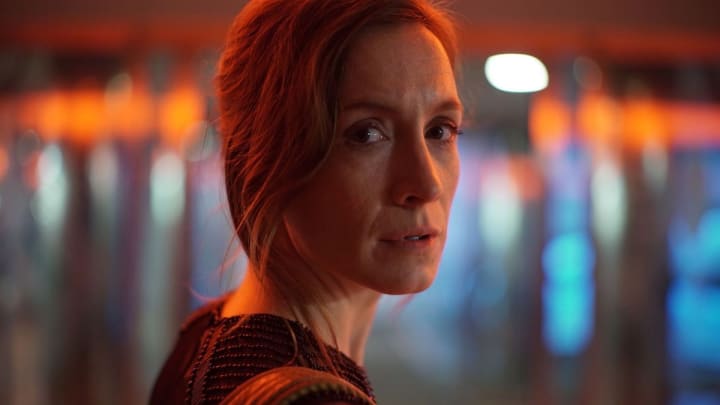






Comments
There are no comments for this story
Be the first to respond and start the conversation.